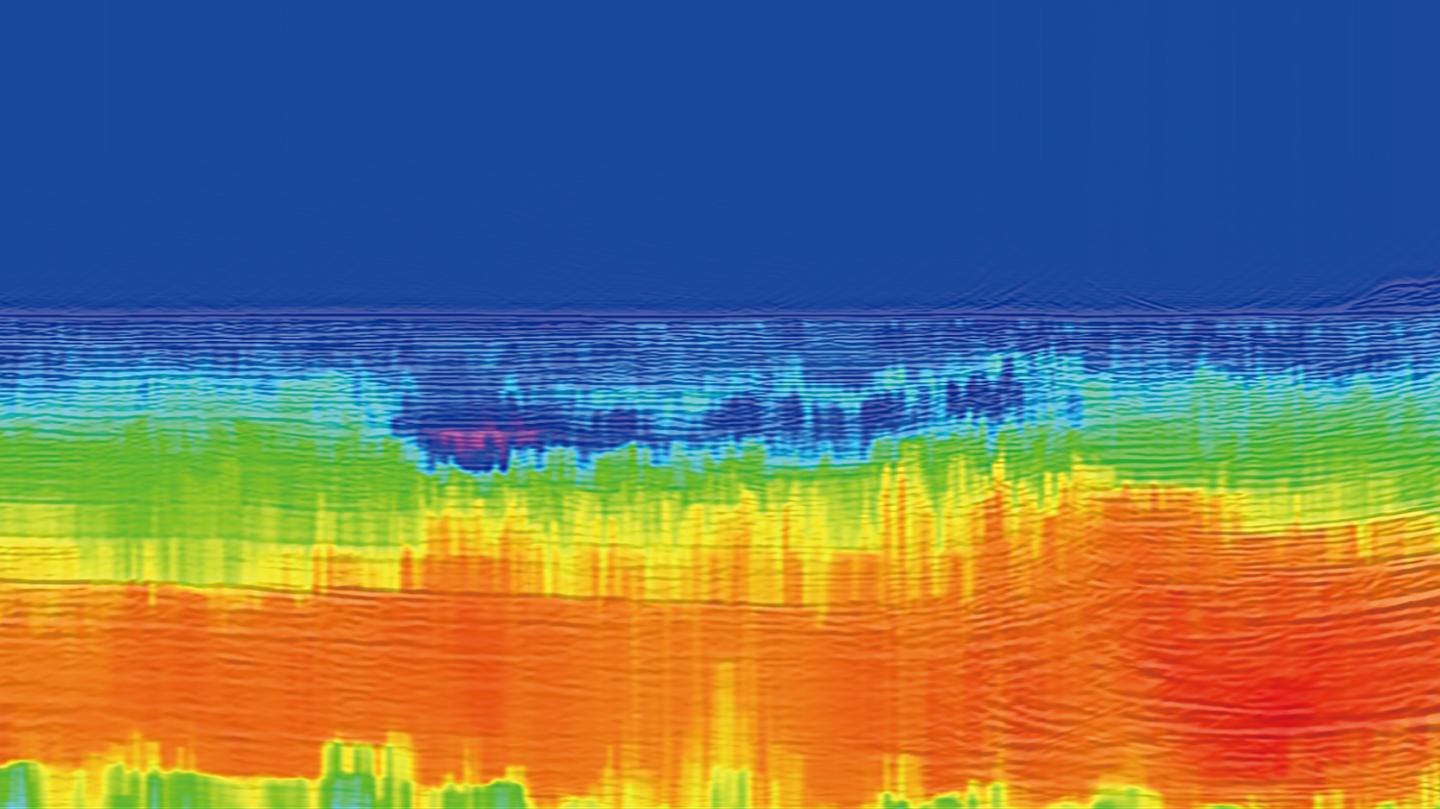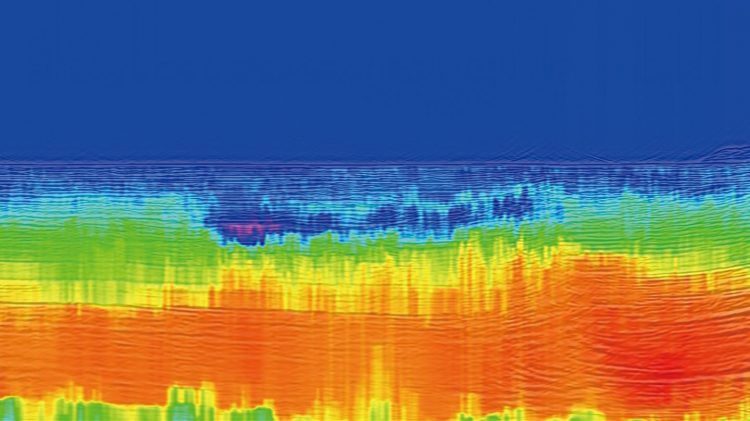Kyushu University researchers’ analysis of seismic data reveals for the first time a large reservoir of methane or carbon dioxide gas where the Earth’s crust is being pulled apart

Credit: Takeshi Tsuji, Kyushu University
Analyzing reflections of seismic pressure waves by the subseafloor geology off southwestern Japan, researchers at Kyushu University have found the first evidence of a massive gas reservoir where the Earth’s crust is being separated. Depending on its nature, the trapped gas could be a potential untapped natural resource or a source of greenhouse gases waiting to escape, raising the need for awareness of similar reservoirs around the world.
While the ocean can seem calm on the surface, the ocean depths can experience intense thermal activity as hot magma seeps from locations where the Earth’s upper layers are being pulled apart–a process called rifting. In such areas, elevated levels of carbon dioxide and methane gas can be present in the water, possibly escaping from magma or being produced by microbial organisms or the interaction of organic-rich sediment with hot water.
In a new study published in Geophysical Research Letters, researchers from Kyushu University’s International Institute for Carbon-Neutral Energy Research (I2CNER) now report that some of these gases may actually get trapped underground, leading to the existence of a massive gas reservoir beneath the axis along which rifting is occurring in the Okinawa Trough.
To find the reservoir, the researchers analyzed measurements of how geological structures reflect seismic pressure waves generated by an acoustic source carried by a boat to the study area. Applying an automated calculation technique to this seismic data, they were able to create a two-dimensional map of the velocities at which the pressure waves travel through the ground with a much higher resolution than previous manual techniques.
“Seismic pressure waves generally travel more slowly through gases than through solids,” explains study co-author Andri Hendriyana. “Thus, by estimating the velocity of seismic pressure waves through the ground, we can identify underground gas reservoirs and even get information on how saturated they are. In this case, we found low-velocity pockets along the rifting axis near Iheya North Knoll in the middle of the Okinawa Trough, indicating areas filled with gas.”
At this stage, the researchers are still not sure if the reservoirs are mainly filled with carbon dioxide or methane. If methane, the gas could be a potential natural resource. However, both carbon dioxide and methane contribute to the greenhouse effect, so the rapid, uncontrolled release of either gas from such a large reservoir could have significant environmental implications.
“While many people focus on greenhouse gases made by humans, a huge variety of natural sources also exist,” says corresponding author Takeshi Tsuji. “Large-scale gas reservoirs along a rifting axis may represent another source of greenhouse gases that we need to keep our eyes on. Or, they could turn out to be a significant natural resource.”
As for how the gas is trapped, one possibility is that layers of impermeable sediment such as clay could prevent the gas from escaping porous underlying layers of materials such as pumice. Based on the flow of heat around the study area, the researchers think another possibility is that a low-permeability cap of methane hydrate–a methane-containing ice–acts as the lid.
“Zones like the one we investigate are not uncommon along rifts, so I expect that similar reservoirs may exist elsewhere in the Okinawa Trough as well as other sediment-covered continental back-arc basins around the world,” explains Tsuji.
###
For more information about this research, see “Large gas reservoir along the rift axis of a continental back-arc basin revealed by automated seismic velocity analysis in the Okinawa Trough,” Kota Mukumoto, Takeshi Tsuji, and Andri Hendriyana, Geophysical Research Letters (2019), https:/
Media Contact
William J. Potscavage Jr.
[email protected]
Related Journal Article
http://dx.




